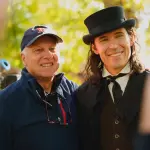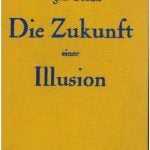
Very recently, the Church of Jesus Christ of Latter-day Saints issued three new sets of official resources to help Church members understand and answer their own questions and those of others on their respective topics. These three are focused on:
- Church Financial Administration
- Temples of The Church of Jesus Christ of Latter-day Saints
- Religion vs. Violence
There is much in these materials to learn and to ponder, and I think that members of the Church and the Church itself will be benefited if Latter-day Saints familiarize themselves with these new resources — as well as with the resources (by now, a substantial library of them) that have been released previously. Questions, challenges, and criticisms rooted in these issues come up every single day.
In the meantime, we remain a perennial focus of cable television writer, directors, and producers. Here’s the latest entry in the field. While it doesn’t directly involve the Church of Jesus Christ of Latter-day Saints, it’s certainly “Mormon-adjacent,” and the distinction between the mainstream Church and some of its more colorful (not to say scandalous and even lethal) spin-offs will undoubtedly elude at least some in the audience: “‘The Thirteenth Wife Escaping Polygamy’: Eric Johnson on Playing ‘Mormon Manson’ in Felicity Huffman Lifetime Movie.”
“I know a lot about your church,” an Australian government official once told me at a reception in (I think) Melbourne. “My wife and I watch Big Love.”

I’ve lately been reading Sam Parnia, Dr. Parnia, M.D., Ph.D., is an associate professor of medicine at New York University’s Langone Medical Center, where he is also director of research into cardiopulmonary resuscitation. In the United Kingdom — born in London, he is a British subject — he is director of the Human Consciousness Project at the University of Southampton. He received his medical degree in 1995 from Guy’s and St. Thomas’ Medical School (that is, from the Medical School of King’s College London and then earned a doctorate in cell biology from the University of Southhampton in 2007, followed by fellowship training in Pulmonary and Critical Care Medicine at the University of London and the Weill Cornell Medical College in New York City. Dr. Parnia has described himself, by the way, as not at all religious.
For several years, this blog was graced with the presence of a resident atheist commentator who called himself “gemli.” His principal objection to the concept of “near-death experiences” — he never really got beyond it — was that, by definition, a “near-death” experience was not, could not be, an experience of death. Nearly dead, he told us over and over again, is not the same thing as dead. I think that it’s partly (but not solely) for that reason that Dr. Parnia rejects the term near-death experience, substituting in its place recalled experience of death. (I’ll probably have more to say about his proposed new term, which he insists is more precise and more accurate, in a future post. It does have a couple of definite advantages, although it’s probably too late to dislodge near-death experience from widespread usage.)
In this post today, I think that I’ll share a couple of paragraphs that resonate very much not only with very many of the accounts that I’ve read but with several accounts that I’ve been given in person by those who had the experience:
One of the most intriguing observations about the recalled experience of death is how different the experience is for the person dying and the people desperately trying to save him or her from death. People undergoing a life-threatening illness or accident may naturally experience a tremendous sense of panic, feat, and distress as their condition deteriorates and they fight for their life. Then suddenly everything goes blank, as they lose consciousness from the outsiders’ perspective. This person who had been teetering around death appears unconscious and seemingly dead, yet from the perspective of the person who is going through death, there is an inexplicable sense of continuation of consciousness, neither interrupted nor halted. Their consciousness now feels more lucid, with visual and auditory awareness regarding events. At the same time, the people on the “outside,” the doctors and nurses, are fighting to revive the individual. There is blood, shouting, calls for more equipment. Perhaps weeping loved ones in a corner.
This inner perception is experienced as a separation of consciousness and selfhood combined with a vast expansion of consciousness, which is very much felt as a release and liberation from the body. This is all experienced without pain or distress, even if the person is undergoing seemingly painful lifesaving medical procedures. This individual — wading deeper and deeper in the grey zone [a favorite expression of Parnia’s for the period (and the proecess) between the onset of dying and final irreversible death] — may look at this frenetic activity with equanimity. What happens to this body on the gurney seems unimportant. (133)
The distinction that Dr. Parnia sketches here between the subjective experience of a dying person and the objective observations of those around him or her (e.g., medical personnel, family members, witnesses) is, of course, the same that yields “the hard problem of consciousness.” Scientists can describe what transpires in the brain of an angry person or a person eating sugar, but such descriptions are of an entirely different nature than feeling anger or tasting something sweet.
I also share a list that Dr. Parnia provides of “fifteen distinct components, or sub-themes,” that are characteristic of the “out of body” portion of a “recalled experience of death”:
- Vast expansion of consciousness.
- Separation from the body with external visual awareness.
- Liberation and weightlessness.
- Hovering or floating in the space around the body.
- Observing the body or events from above.
- Becoming detached from events and the body.
- Realization of having died.
- Lucidity with reasoning and clarity of thought.
- Initial confusion. This is often transient and often goes away after the person becomes accustomed to their [sic] new situation.
- Taking on the appearance of a transparent humanlike form or a light.
- Bird’s-eye view — in all directions — as if through 360 degrees.
- Consciousness pervades everything.
- Shedding the body.
- Connection by a metaphorical cord.
- Selfhood and consciousness not the same as the body. (133-134, italics removed)













